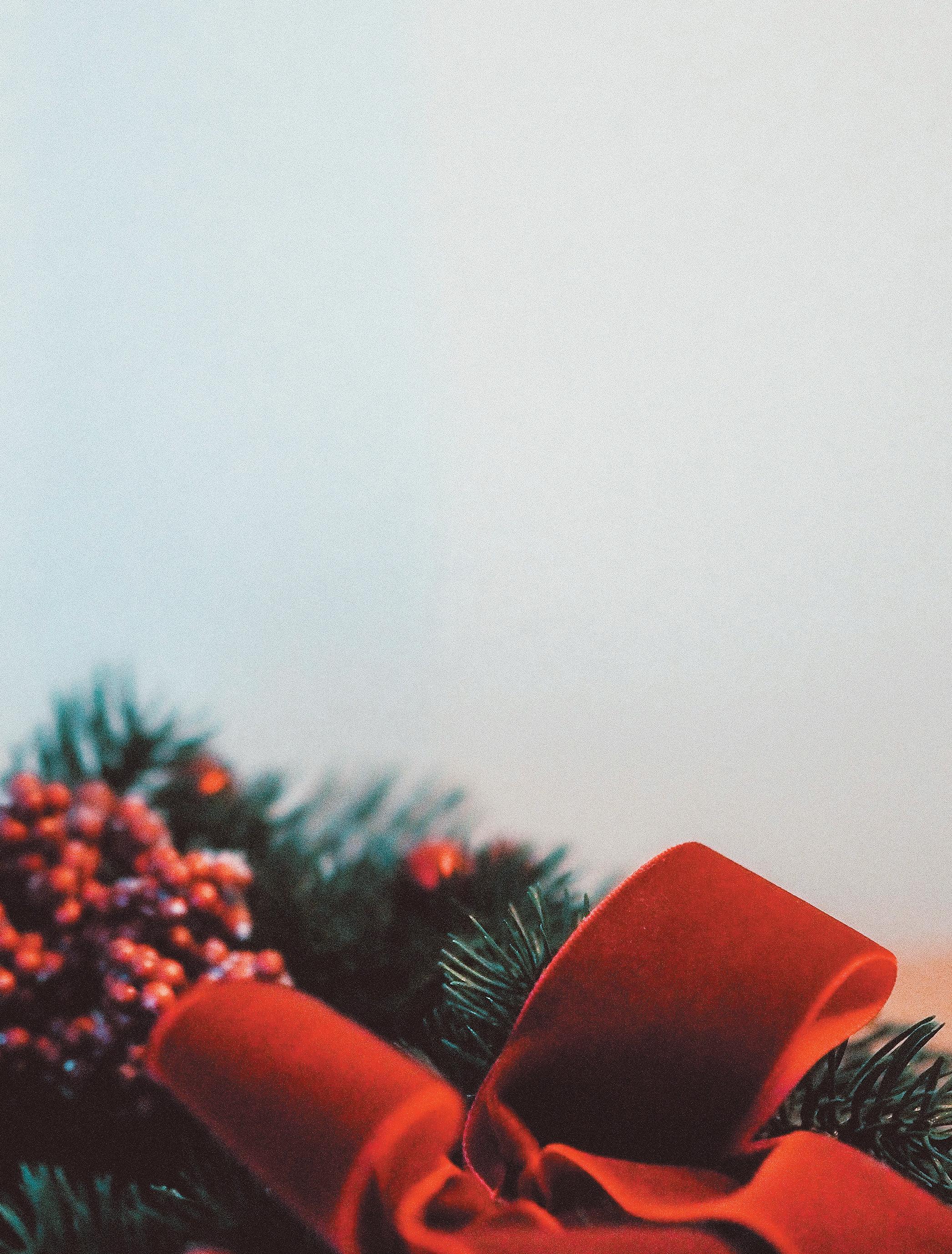
2 minute read
Winter Solstice & Yuletide
Celebrating the Holidays with Winter Solstice and Yuletide
By Hayley Mattson
During this time of year, there are so many holiday traditions that bring family and friends together. Holiday shopping, festive events filled with snow, Santa Claus and reindeer, lights, candles, and cheer; however, one symbolic and richly traditional day will come and go, and most people will miss it.
Winter Solstice is the shortest day and longest night of the year. Cultures around the world have long held feasts and celebrated holidays around the Winter Solstice. Fire and light are traditional symbols of celebrations held on the darkest day of the year.
Since ancient times, people all over the world have recognized this important astronomical occurrence and celebrated the subsequent “return” of the sun in a variety of different ways. In addition, old solstice traditions have influenced holidays we celebrate now, such as Christmas and Hanukkah.
There is no better time of the year to feel and show your love than the holiday season. Though many people relate the month of December with Christmas, there’s so much more to be said about the month. From Hanukkah and Kwanzaa to showing selfless acts of love, this season is all about spreading joy and cheer during the coldest time of the year.
This year, Winter Solstice falls on Wednesday, December 21, and in the northern hemisphere, the date marks the 24 hours with the fewest daylight hours of the year.
Winter Solstice is considered a turning point in the year in many cultures. The day is held sacred and celebrates the new solar year’s birth, also known as Yuletide.
Yuletide refers to the time around the Christmas season, traditionally recognized from December 21 until January 1, and dates back centuries. Though Yuletide’s rituals have changed dramatically over the years, some Yuletide traditions remain and have contributed to modern-day celebrations of the festive season.
Decorating an evergreen tree was a common Yuletide custom in ancient times, as was giving gifts to friends and loved ones. The Yule Log is another centuries-old tradition meant to symbolize the passing of an old year into a new one, with the promise of hope and happiness. The oak log is usually decorated with evergreen branches, sprigs of holly, bare birch branches, and trailing ivy vines. A more delicious alternative is the classic French Bûche de Noël, a decadent chocolate cake baked in the shape of a Yule Log and shared with family and friends at a Yuletide gathering.
Children and adults alike around the world find so much joy in the magic this season brings. No matter what you celebrate, may we find peace and love in celebrating together and showing kindness to one another.
May we remember that this season also brings with it the cold and isolation and prompt us to reach out and share our many blessings with others. It is important that we recognize that and know that the dark winter days bring the warmth of spring that heals and rejuvenates our souls and that the holiday season is so much more than gifts found under the tree.
“May you find peace in the promise of the solstice night, that each day forward is blessed with more light. That the cycle of nature, unbroken, and true brings faith to your soul and well-being to you. Rejoice in the darkness, in the silence, find rest, and may the days that follow be abundantly blessed.”










